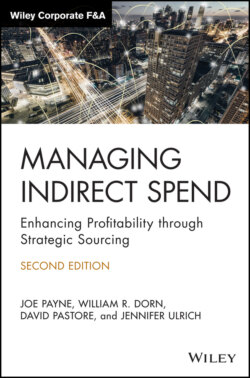Читать книгу Managing Indirect Spend - Joseph Payne, Joe Payne - Страница 58
TYPES OF COST‐SAVINGS OPPORTUNITIES
ОглавлениеOrganizations typically realize cost savings through three primary methods: leveraging data intelligence, making process improvements, and choosing new products or services.
Organizations most often act on cost‐savings opportunities by using the information from the Data Collection and Spend Analysis phase to achieve a lower net price for a specific product or service. The goal is to gain advantages that less‐informed customers might miss out on. You can secure these lower prices through negotiations or a transition to a new supplier. To identify these opportunities, you'll want to gather intelligence related to potential alternate suppliers, including soliciting pricing proposals.
Remember that the Strategic Sourcing can do more than lower unit hard costs. It also involves investigating and implementing efficiencies that can result in decreased processing time, lower transaction costs, and enhanced support for the procurement and supply chain management units within your organization. Process improvements and product or service changes are often overlooked during Strategic Sourcing initiatives; however, these factors have the potential to reduce overall spend much more than unit cost negotiations. Just because you currently process orders a certain way or use one type of technology to support a requirement does not necessarily mean that those are the best or most efficient methods. During the Research phase, you'll begin to explore the alternatives as they relate to technology, processes, products, and services.
In this chapter, we review the components of the Research phase of a sourcing initiative. More importantly, we identify what to look for in your research. We also discuss the predominant method for collecting this information—the request for information, or RFI.
